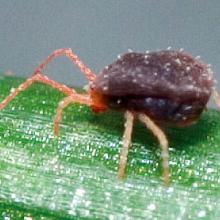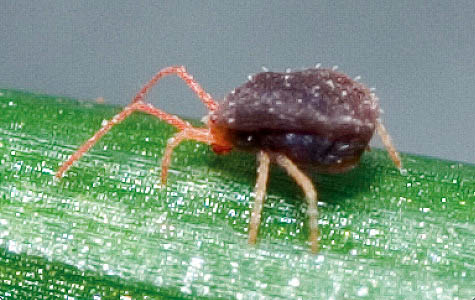Clover Mite or Bryobia Mite
Bryobia spp.
Adults are about 0.75mm in length, have an oval shaped and flattened body. They have a brown to fawn-orange coloured body and eight pale orange legs. The front legs are 1.5 times the length of their body. They are most active in warm conditions in Autumn, Spring and early Summer. These mites are generally found in low numbers over the Winter period. Summer rains followed by warm mild Autumns give Bryobia mites the best conditions for survival and increase.
Mites are difficult to find when conditions are wet. Check during the warmer part of the day when mites are most active. Look for damage and the presence of mites on clovers and Brassica weeds before sowing and examine crops at emergence. Early control of Summer weeds in paddocks that are to be cropped will prevent the build up of mite populations.
If in large numbers, the incorporation of insecticide with herbicide immediately prior to sowing is a more effective control strategy than spraying when the crop is emerging and has very little cover of green material.
Organophosphate-based chemicals reportedly give better control over Bryobia than synthetic pyrethroids. Rates of insecticides commonly used to control red legged earth mite are generally not effective against Bryobia mites.
Mites feed on the upper surfaces of the leaf by piercing cells and sucking out the contents. They cause distinct whitish grey feeding trails on cotyledons and leaves. Attack on newly emerged leaves can result in discoloured leaves, which fail to grow.
Bryobia Mite
CESAR
 Skip to main content
Skip to main content


